Overview
Through this demonstration and review of the attached research documents and the expedition PolarConnect event archive you will better be able to visualize how warming deep ocean currents undermine the ice sheets of Antarctica.
Objectives
To determine, through a demonstration and review of a scientific abstract, how warm water currents speed up ice sheet loss and sub-ice water infiltration into the Southern Ocean.
Lesson Preparation
Review the PolarConnect Event hosted by teacher Glenn Clark while on expedition studying glacier systems in Antarctica. This presentation includes a PDF of slides (attached), an audio file, and video file of the presentation.
Distribute and review the attached A Brief Interpretation of the NBP1402 Abstract.
Procedure
(see photos)
Cut out the bottom half of one of the small glad containers approximately 2 inches.
Tape the hose to the bottom of the cut out container.
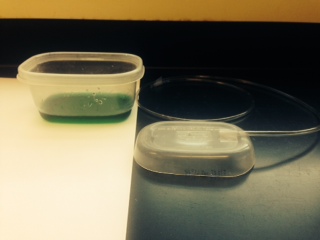
Procedures 1 & 2 Place the hose and cut out container into the blue colored water as shown. Freeze.

Procedure 3 Once frozen, place the frozen colored water ICE UP into the large Glad container that contains water at 1-2 degree Celsius. The water level should just exceed the bottom edge of the frozen ice.
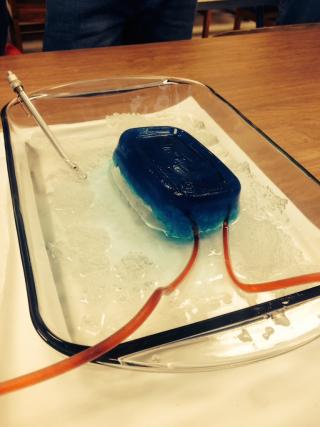
Procedure 4 Holding the other end of the hose slowly add warm (colored red) water, allowing it to infiltrate under the ice.
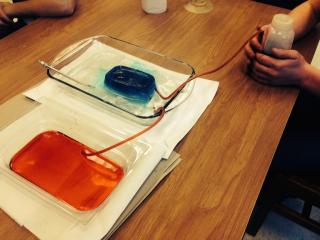
Procedure 5 Observe the movement of the melted blue colored water enter the large Glad container.
Using the Nalgene bottle with nozzle, slowly deposit small warm water ponds on the surface of the ice and observe the movement of the now unfrozen colored (blue) water.
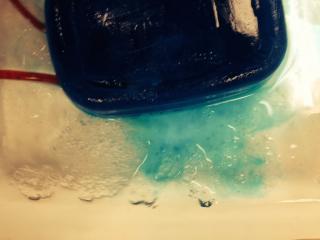
Procedure 6
Extension
n/a
Resources
PowerPoint presentations (attached). A Brief Interpretation of the NBP1402 Abstract (attached). Prepared questions (attached)
Assessment
Completion of the questions. Be able to demonstrate and explain this activity to an elementary class.
Author / Credits
PolarTREC teacher Glenn Clark Glenn can be contacted at <zooclark [at] yahoo.com>.
File Attachments
PolarConnect Event Archive
A brief interpretation of the NBP1402 Abstract.
Questions.
Photos of the procedure , materials, and evidence of ice melt in lab.
Materials Photo
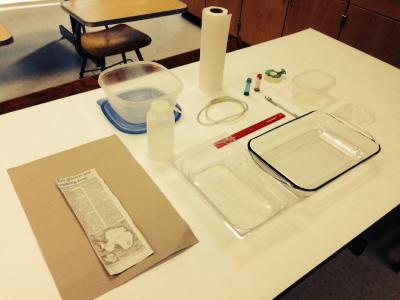
Standards
5-8 Content Standard D: Earth and Space Science: a. Structure of the earth system b. Earth's history c. Earth in the solar system 9-12 Content Standard D: Earth ad Space Science: a. Energy in the earth system b. Geochemical cycles c. Origin and evolution of the earth system d. Origin and evolution of the universeStandards Other
US.NSES. 9-12 12DESS1.4 (Global Climate)
| Attachment | Size |
|---|---|
| Download Lesson (PDF - 776KB)776.24 KB | 776.24 KB |
| Download Student Worksheet (DOC - 13KB)13.74 KB | 13.74 KB |
| Download Teacher Key (DOC - 15KB)15.39 KB | 15.39 KB |
| Download Abstracts (PDF - 130KB)130.41 KB | 130.41 KB |
This program is supported by the National Science Foundation. Any opinions, findings, and conclusions or recommendations expressed by this program are those of the PIs and coordinating team, and do not necessarily reflect the views of the National Science Foundation.
